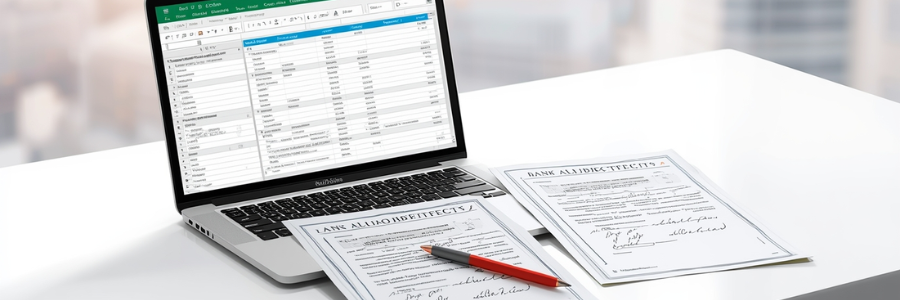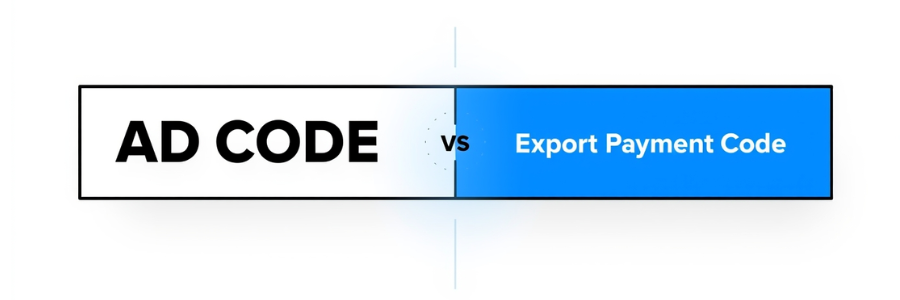How Does the Export Payment Code Help in Tracking Foreign Receipts?
The AD code made the foreign exchange transactions smoother for the exporters. The 14-digit code allows the exporters and RBI to track the transaction’s progress. To simplify and create visibility in the process of foreign exchange, another code was launched, “Purpose Code”. It is also known as the export payment code. This vital code is used by the country’s central bank, such as the Reserve Bank of India (RBI). The major reason to use the export payment code is to track and classify foreign receipts. The purpose code adds the transparent layer that eligibles to moniter the flow of foreign currency. But what route does it follow to track the foreign receipts? Let’s dive into this guide to explore how the AD code registration works with the export payment code to trace the foreign receipts.
1. The Role of Export Payment Code in Tracking Foreign Receipts
The export payment code or purpose code serves essentially as it is a unique identifier code.. It is generally used by banks to trace and classify foreign exchange transactions. By acting as the unique identifier, it ensures transparency and compliance with RBI and DGFT. The exporters need to inform banks about their purpose code to banks.
For example, if you are a holder of an AD code, you will inform your export payment code to the bank where you hold a current account. This authorized bank will submit the payment transaction information to the RBI by using the Export Data Processing and Monitoring System (EDPMS).
2. What is the Regulatory Compliance for Export Payment Code?
- Guidelines of RBI and FEMA: Under the FEMA rules and laws, using the right purpose code is crucial. The code is a common tool for RBI to track the foreign currency flow. However, proposing the wrong payment code can underline that payments and any possible financial liabilities would be delayed.
- Offers Paperless Audit Trail: With the use of a purpose code, the record of transactions is stored in EDPMS. It stores all foreign currency transaction records transparently. It significantly reduces the manual paperwork.
3. Export Payment Code Benefits for Exporters
The ‘purpose code’ offers numerous advantages to the AD code-registered exporters. The key benefits of using code are:
Adherence to Compliance
“Purpose code” ensures that the foreign transaction you are issuing conforms to the standards outlined in the Foreign Exchange Management Act (FEMA) and the rules established by the Reserve Bank of India (RBI). Through it, the authority gets access to ensure the currency’s legitimacy.
Seamless Currency Transfer
It makes the foreign exchange simpler process for the exporters and RBI, making it easier to manage outflow and inflow of funds. It reduces the requirement for additional compliance verification.
Accurate Documentation
It gives transparency while providing the documentation in an accurate format, and it streamlines tax filing and audit requirements. The code is important for the generation of e-FIRA, which serves as the payment proof.
Avail Government Benefits
Like the AD code bank account registration, the purpose code is mandatory for accessing the GST refund and other export promotion schemes.
4. How Export Payment Code Improves Compliance and Reporting
Commanded by the Reserve Bank of India (RBI), the export payment code serves as the identifier. The code is used for foreign exchange transactions. The correct code helps improve the compliance and transaction reporting status. In short, the export payment code improves compliance by enforcing regulatory transparency, preventing financial fraud, ensuring compliance with FEMA, and speeding up remittance processing. The key factors that improve reporting:
- Creates Accurate Documents: The purpose code is used as proof during foreign remittances. For the generation of Electronic Bank Realization Certificate (e-BRC) and Electronic Foreign Inward Remittance Certificate (e-FIRC), the export payment code is used.
- Simplify Tax Assessment: The tax authorities use the code to classify the purpose of foreign remittances.
For example, the export payment code P0102 is used for exported goods.
- Unlock Government Benefits: The claim that the government supported benefits and schemes, the exporters are required to showcase their e-BRC to the DGFT. An accurate export payment code and e-BRC certificate a vital for unlocking the government schemes and benefits.
- Adherence to EDPMS: The banks submit all records from shipment to payment realization to the RBI’s Export Data Processing and Monitoring System (EDPMS). To report, the banks use the purpose code.
5. Familiar Problems and Suggestions for Using Export Payment Codes
Not using the purpose code raises significant challenges for exporters as well as for the regulatory authority. The most common challenge is difficulty in code selection. There are lots of codes available that overlap during classification creates a lot of confusion. Due to the wrong code, the exporters might face a delay challenge. As with AD code registration at customs is mandatory, providing the right export payment code is a prerequisite. The banks refuse to proceed with he foreign exchange without the accurate export payment code. The mistakes in coding can result in a delay or payment rejection by the authorized bank.
6. The Best Practices to Avoid the Challenges
The journey of international trade begins with the IEC, followed by the AD code registration process, and culminates in the export payment proof certificate. To avoid the challenges, follow these practices:
Practice 1: Start with Clear Identification
Before the transaction process, the exporter must classify the product or service line. Ensure whether the foreign transactions are for goods or for services.
Practice 2: Leveraging to official Code List
The exporters must use the most recent purpose code. It is basically offered by the RBI. Alternatively, you can review your recent bank’s website to consider the latest export payment code. The code is also published on the remittance platform.
Practice 3: Avoid General Codes
The remittance authority is asking exporters not to use the generic codes. As per the most recent updates by the banks, they are not accepting the general-purpose code.
Practice 4: Match Code to Documents
The export payment code must be consistent for all invoices. The exporter must ensure that the code they selected, also their transactions invoice. A single mistake in any record can result in red flag situations.
Practice 5: Modern Payment Platforms
For automated compliance, one must seek to use the modern payment platforms. The most standard features of payment platforms help with code selection.
Practice 6: Link AD Code to Payment Code
For faster customs clearance, the linking of the export payment code to the AD (Authorized Dealer) code is a prerequisite.
Practice 7: Contact with an Expert
If you are not quite acquainted with how to utilize the purpose code, seek help from your bank’s forex helpdesk. To optimize the overall mechanism, contact a legal professional, for example, as LegalRaasta.
7. Sum Up | Digital Payment Tracking for Exports Through Cross-border Payment Systems
To track the cross-border financial transactions, the regulatory authority, such as the RBI, uses the export payment code. Exporters are required to follow the foreign exchange code stipulated by the RBI and the compliance standards set by the FEMA Act. Once exporters apply for the AD code bank account registration, it links the current account on the ICEGATE portal, which links to international trade activities. During the shipping bill filing, the exporters use the AD code as well as the purpose code to classify the export nature. Authorized dealer code and export payment code work together to ensure financial and regulatory compliance accurately. Make your AD code registration for the export journey faster and smoother with LegalRaasta professionals. Our experienced experts will guide you throughout the registration journey.









